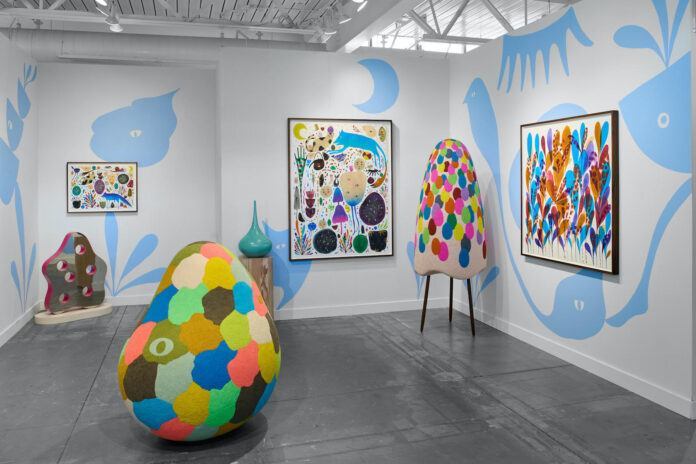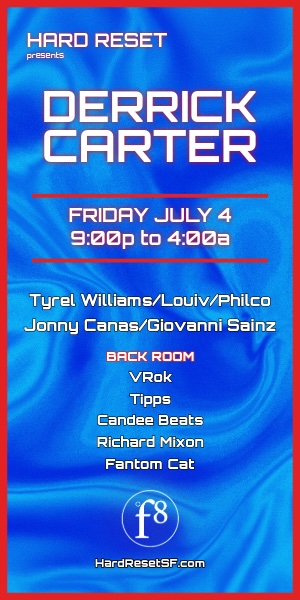“It’s an amazing honor to be a part of this really large, established annual event, and it’s exciting for newer, upcoming galleries and artists to get to be shown and exposed,” photographer Chloe Sherman told 48 Hills. “And vice versa for collectors and people to have easy access to newer, younger, or less known artists. It’s an exciting time for both parties.”
Sherman, who recently released a much-lauded book, Renegades: San Francisco, The 1990s, full of photos of queer people in the Mission that she took when she was a student at the San Francisco Art Institute, is referring to FOG Design+Art, one of San Francisco’s biggest art fairs, which took over Fort Mason from January 18-21.
This year, on its 10th anniversary, nine galleries—five from the Bay Area—were invited to exhibit at SFAI’s former building. A new program, FOG Focus, primarily showcased younger, underrepresented artists, as Sherman mentioned. Speaking just a couple hours into the fair, Sherman said she’d already had some fascinating conversations and made some connections with collectors and people with the San Francisco Museum of Modern Art.
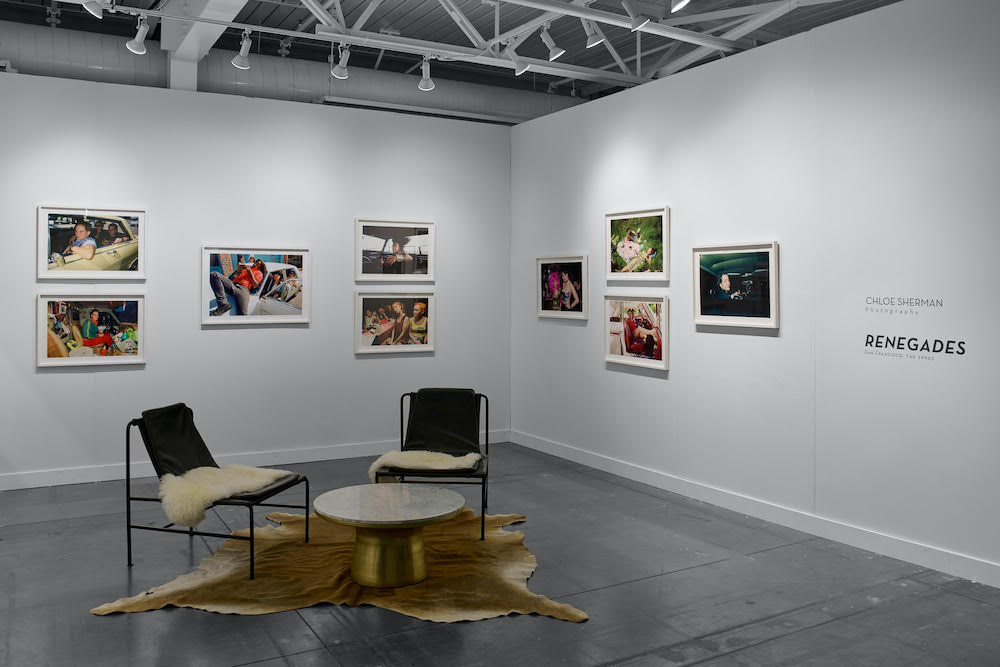
Sherman was standing at the booth representing Schlomer Haus Gallery, the queer-centric gallery Steffan Schlarb and husband Brandon Romer opened in the Castro in 2021. After seeing Sherman’s work on Instagram, they offered her a solo show in 2022, which led to her book.
Championing an artist like Sherman is something smaller galleries like his can do, Schlarb said.
“The art scene has become so globalized, and a lot of the big collectors don’t feel the need to come to a smaller market like San Francisco. They can go to New York or LA or Basel,” he said. “But really, the smaller galleries are where the new artists are coming up. Being that close to the communities really allows that vibrant nature of emerging artwork to rise up.”
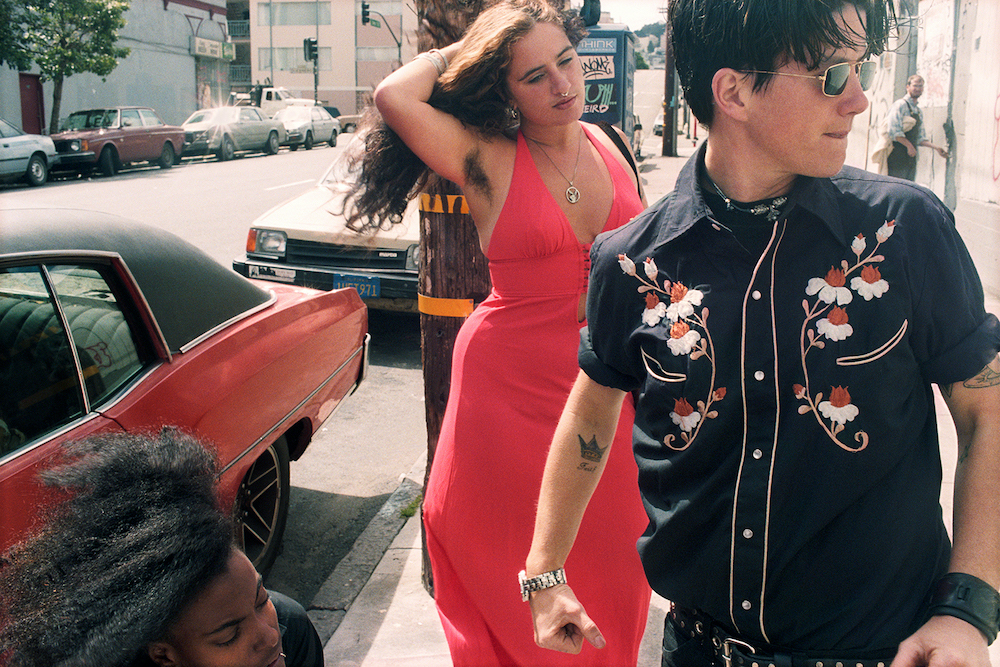
Across the hall from Schlomer Haus, CULT Aimee Friberg was showing a solo exhibition of new watercolors and felt and bronze sculptures by Masako Miki.
Miki, who lives in Berkeley, said the FOG Focus program draws an engaged audience.
Help us save local journalism!
Every tax-deductible donation helps us grow to cover the issues that mean the most to our community. Become a 48 Hills Hero and support the only daily progressive news source in the Bay Area.
“For a lot of people from outside of the Bay Area, it’s hard to grasp the idea of the tight community spirit here, which I think is unique in the Bay Area,” she said. “This is a platform where we can share the solidarity of our art community and artists and supporters and museums.”
Reached by phone the next day, Friberg, who has a gallery in Oakland and one in San Francisco, said they’d made some sales, had some interesting conversations, and generally, had a fun night.
“People just love Masako and her work so much. It’s such a joy fest—they come over, and they’re so enraptured,” Friberg said. “How can you have a bad time when you’re grounding people’s ecstasy? It’s like giving people therapy.”
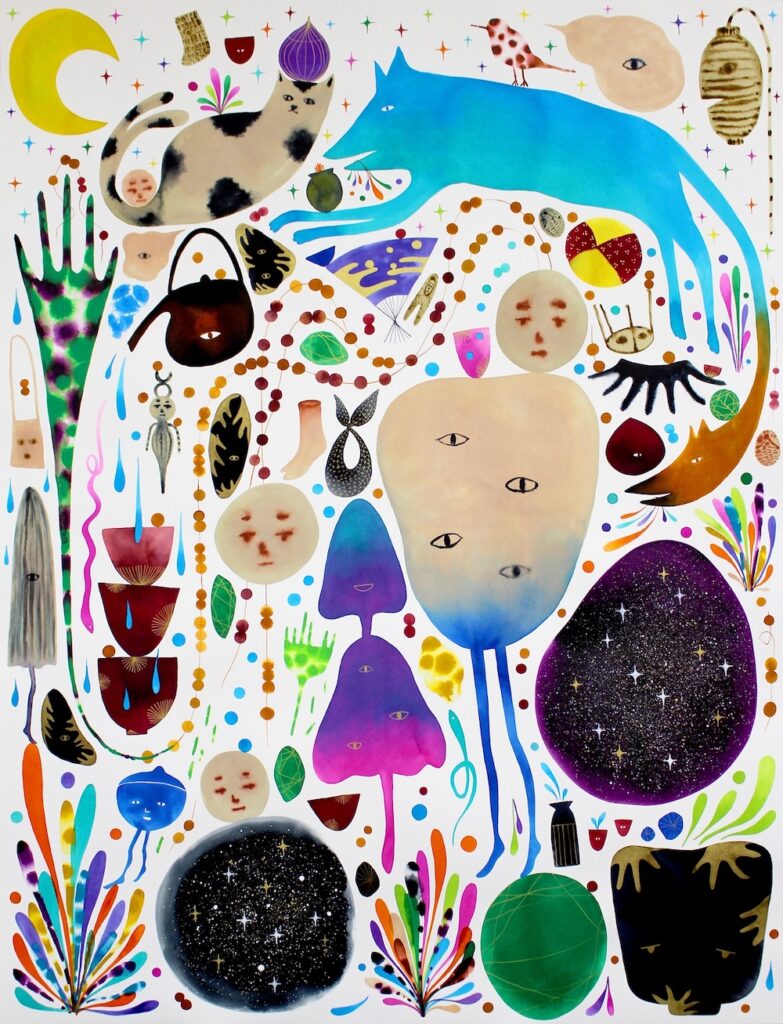
That’s the collaborative spirit of Bay Area arts people coming through, Friberg said.
“FOG is a big part of the infrastructure here, and it’s really become the Art Week in San Francisco when the rest of the world pays attention to what’s happening here,” she said. “For FOG to recognize that and to make a curatorial section [FOG Focus] that provided an opportunity for people to see exhibitions, single and two person shows, was really important because it gave a sense of deeper understanding of the practice.”
Next to CULT, Jonathan Carver Moore displays textiles by Adana Tillman. Tillman had a solo show, “I AM EVERYDAY PEOPLE”, at Moore’s gallery in San Francisco’s Transgender District last August.
“People really responded to her work,” he said. “Her art is about Black joy and living proudly. The vibrancy of it is just so exciting, and people immediately are drawn to it. I think people think of it as more of a global phenomenon because she uses fabrics from her travels, so there are fabrics from Oakland, fabrics from Berlin, fabrics from Tanzania, and fabrics in New York, and she creates one amazing piece.”
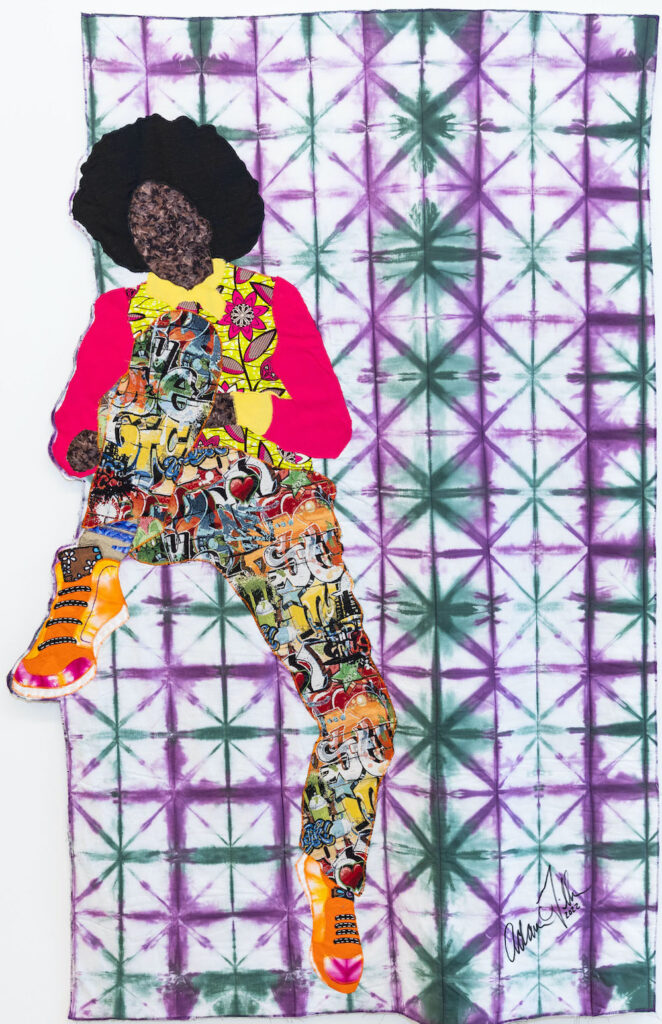
Moore, whose gallery has been open less than a year, described himself as “elated” to be at the fair.
“FOG is a prestigious fair, and it’s something that’s bringing newer energy, excitement, newer artists,” he said. “I think that’s what people are wanting to look toward. I also feel like people don’t look at San Francisco and immediately think, “art- based, art-centered, art-focused,” but the reality is we are, and I feel like we share this startup mentality when it comes to the art world.”
Julie Rodrigues Widholm, executive director of the Berkeley Art Museum and Pacific Film Archive, was at Moore’s booth, and she was glad to see a new section of the fair.
“It’s important to provide space to the next generation of galleries and to show us who they’re excited about, and expand what we’re looking at beyond the blue-chip galleries that we’re also very excited to see here,” she said.
Chris Eskra, an interior designer in San Francisco who has been coming to the fair for years, agrees with Widholm. He believes FOG Focus is where you’ll find artists to watch.
“I’ve been to Art Basel in Miami a few times, and I find it so interesting to go to some of the outlying galleries as opposed to just the Convention Center with the Renoirs and the Chagalls and the Monets,” he said. “To go and find new and emerging artists is where you can really find inspiration. I love that.”
Oakland’s Johansson Projects has a good mix of emerging and more established artists, gallery assistant Simone Dukes said. Woven acrylic works by Miguel Arzabe (just announced as a SFMOMA SECA Award finalist) and landscapes of Mare Island by Nicole Irene Anderson are on display at the booth.
Anderson, an MFA art studio candidate at the University of California, Davis, has been with the gallery for just a few months.
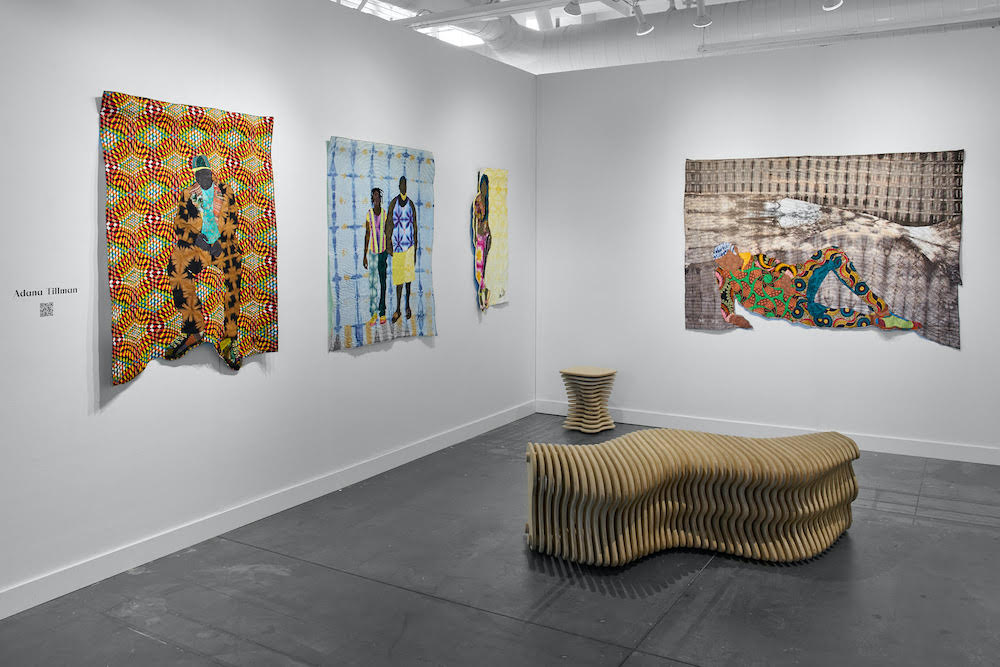
“It’s kind of a big step for me being here and being able to have curators and all these people have eyes on the work,” she said. “It’s great to see artists that are maybe not as represented in the regular FOG Fair, and it feels a little bit more fresh.”
Pauli Ochi, up from Los Angeles with her gallery OCHI (which represents beloved Bay Area artist Marcel Pardo Ariza) said she was glad to be back in San Francisco, presenting paintings by Ben Sanders.
“I think adding this section is an exciting step for the fair,” she said. “We’re really honored that they asked us to be a part of it because there’s some other really awesome other galleries in this section.”
FOG Focus committee member, board member of the Cantor Arts Center and the Institute of Contemporary Art, and all-around Bay Area arts lover Pamela Hornik says the theme of the festival this year was “a love letter to San Francisco.”
“I walked in early and at one point I heard Green Day playing and I was looking out at the bay, and—this sounds so schmaltzy—but I saw a reflection of the sun on the bay because yes, it was actually sunny and not raining during a FOG Fair, and I was standing by the Creative Growth, NIAD, and Creativity Explored booths. It was just such a beautiful San Francisco moment, and it did feel like a love letter to the Bay Area and what I love about the Bay Area.”
Growing the fair and making it more inclusive only added to that feeling.
“That’s what I loved about FOG Focus — it was these younger galleries, artists that have not had institutional shows,” Hornik said. “It just felt like a really great way to kick off the fair.”

